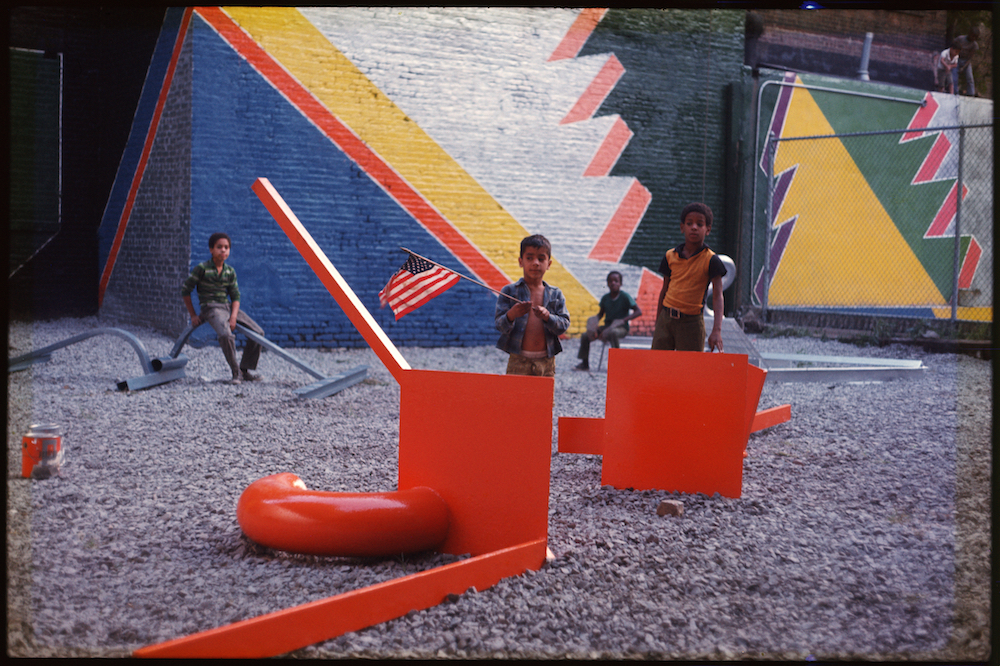Opinion
Harlem’s Smokehouse Collective Wanted to Heal With Abstraction
THE DAILY PIC: At the Studio Museum in Harlem, 'Smokehouse, 1968–1970' shows abstract public art that was about more than its looks.

THE DAILY PIC: At the Studio Museum in Harlem, 'Smokehouse, 1968–1970' shows abstract public art that was about more than its looks.

Blake Gopnik

THE DAILY PIC (#1810): Talk about a sleeper exhibition. I doubt “Smokehouse, 1968–1970,” at the Studio Museum in Harlem, is on many must-see lists, but it ought to be. Tucked away into a black box of its own, a slide-show of archival images documents Smokehouse Associates, a collective of Harlem artists—originally William T. Williams, Melvin Edwards, Guy Ciarcia and Billy Rose—who introduced bright abstract murals and sculptures into the fractured urban fabric of the neighborhood. Smokehouse had the thought, and the hope, that art could help heal those fractures. You could say that this was “relational esthetics” before anyone came up with the word, using abstraction before it joined art’s undead. (Image courtesy Michael Rosenfeld Gallery LLC, New York; photo by Robert Colton, New York, NY)